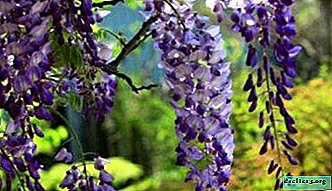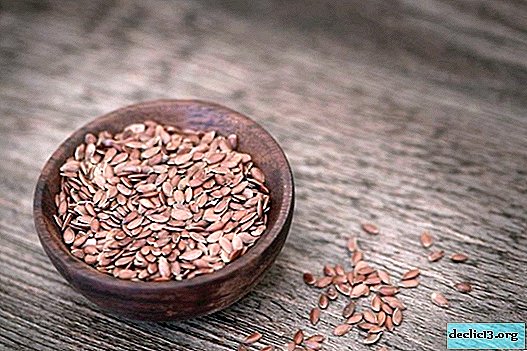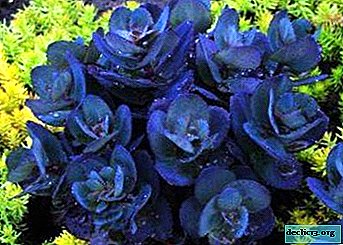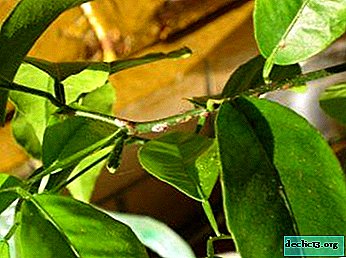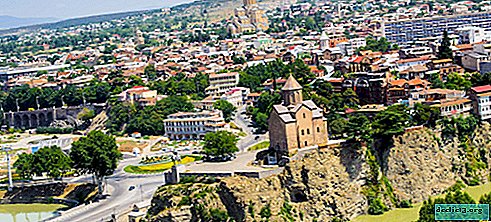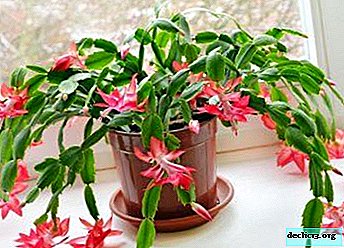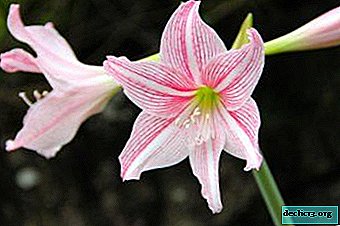Radish in the diet of various animals. Is it possible to give root crops to guinea pigs and other pets?
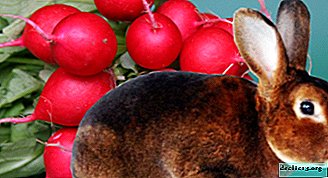
For easy and healthy feeding of animals of all kinds, there is a large assortment of prepared feeds. But many owners prefer to feed their pets more natural food.
Radish can be attributed to such food, but not for all animals it is equally useful. Read on whether radishes are allowed for such animal hamsters, rabbits, guinea pigs, dogs, parrots, domestic rats and snails, and also what will happen if your pet ate a forbidden root crop.
Is radish allowed for animals?
Next, consider whether various animals can eat radishes.
To dogs
For dogs, for example, Yorkshire Terriers, it is perfectly acceptable to periodically add fresh radishes to the diet in small quantities. A small portion of finely chopped vegetable is added to food no more than once a week.
Be sure to keep in mind that Yorkies have a sensitive stomach, and excessive consumption of radishes threatens with unpleasant consequences.The use of radish for dogs is that coarse indigestible fibers act as a toothbrush for the oral cavity and as a source of fiber for the gastrointestinal tract.
Radish tops, as a vitamin supplement, is suitable for:
- feeding puppies;
- lactating bitches;
- young dogs.
Hamsters
 This root crop is well suited for hamsters of any breed:
This root crop is well suited for hamsters of any breed:
- Syrian
- Dzungarian;
- Roborovsky, etc.
Radish is rich in vitamins, minerals and fiber, which is very beneficial for animals. The main thing is not to overfeed hamsters with radishes - in reasonable quantities it will be beneficial, but unlimited access to it may cause problems with the gastrointestinal tract (bloating, flatulence, abdominal pain).
The root crop is cut into small pieces and fed to rodents in a mixture with other fresh vegetables. A hamster is not recommended to add radish every day. Fresh green tops are good food for rodents, the main thing is not to forget to rinse it thoroughly.
Rabbits
For rabbits grown for meat, radishes can and should be given. The root crop is gradually added to food from an early age, in crushed form. After three months, rabbits can be fed whole radishes, increasing their content in the diet. The tops of the plants are added to silage and hay, but for this it must be slightly withered.
Before giving the rabbit a fresh root crop, you need to make sure that the plant has not been treated with chemicals. Otherwise, the animal may get poisoned.For decorative rabbits, the root crop is also suitable as a feed. Pets can be fed a young peeled radish. The tops before feeding rabbits are added to various green salads.
From the video you will learn whether it is possible to give radishes to rabbits and how to do it:
Guinea pigs
 Radish belongs to the cruciferous family. Vegetables of this family are not recommended for guinea pigs. Radish fruits can cause serious intestinal problems in guinea pigs. The root crop contains essential oils that irritate the mucous membranes and airways of rodents. However, the tops of the plants are quite suitable for consumption. The high vitamin C content makes radish tops a good treat for guinea pigs.
Radish belongs to the cruciferous family. Vegetables of this family are not recommended for guinea pigs. Radish fruits can cause serious intestinal problems in guinea pigs. The root crop contains essential oils that irritate the mucous membranes and airways of rodents. However, the tops of the plants are quite suitable for consumption. The high vitamin C content makes radish tops a good treat for guinea pigs.
It is important to correctly introduce radish tops into the diet:
- For feeding, only fresh tops are used.
- Tops are added to the diet for guinea pigs at most once a week.
- If alarming signs appear in an animal after eating a plant, it is necessary to stop adding tops to it in food.
Parrots
Parrot radish root crops are strictly prohibited, since they have coarse fibers that adversely affect the mucosa of the gastrointestinal tract. After eating this vegetable, the parrot has a risk of earning stomach and intestinal diseases; treatment may be required.
Small amounts of radish tops can sometimes be added to the diet of parrots along with other herbs. Leaves must be young and fresh.
To rats
The radish is too pungent and causes intestinal problems, therefore root crops are not recommended for rats. As a green top dress, you can occasionally add root vegetables, young leaves do not have such an acute taste as radish root. Moderate consumption of the green part of the plant will not damage the digestion of the rat.
Snails
Radish root crops are not recommended for feeding snails.since they are too sharp for pets. Radish contains mustard oil, which can adversely affect the digestion of the cochlea. Young radish tops are a good option for eating Achatina, the main thing is that the greens are well washed and not rotten.
Hard, old leaves should not be fed to Achatina snails, as they are difficult to digest.The consequences of the use of prohibited root crops
When eating radishes for animals, the following symptoms can be observed:

- Increased flatulence, bloating.
- Diarrhea, abdominal pain.
- Vomiting
In advanced cases of flatulence, negative consequences may develop, for example, inversion of the intestines. In this case, surgical intervention is required.
With alarming signs, you can take the following actions:
- Gastric lavage in large animals.
- You can give the affected animal medications that eliminate flatulence and bloating.
- Feeding something sweet partially neutralizes the mustard oil in the radish.
- The use of enveloping agents also gives a positive effect.
Radish is a healthy vegetable rich in vitamins and minerals. However, due to the content of mustard oil, the root crop is not useful for all animals. In any case, you should be careful about feeding your pets and observe the measure when feeding radishes.


